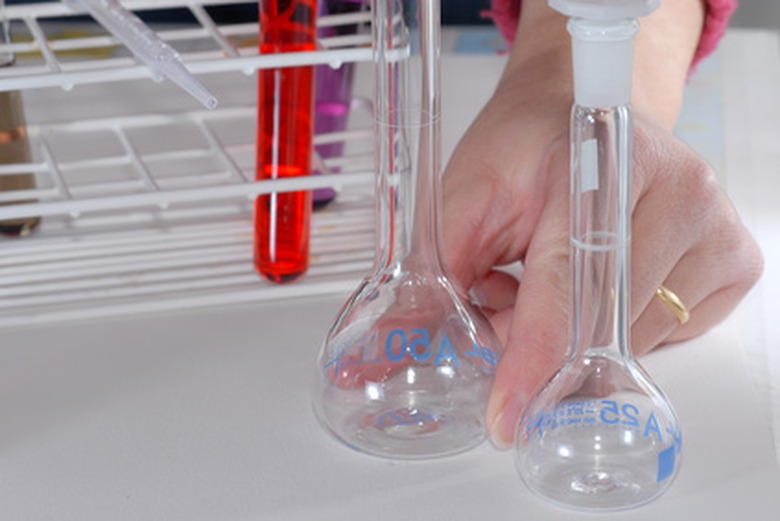Product Testing Ideas For A Science Fair Project
Science projects that deal with volcanoes or solar systems are educational and pleasing to the eye, but they seldom inform the student's everyday life in a quantifiable way. A more relatable idea is to conduct science experiments through product testing, to validate claims of nutrition or to investigate a product's potential.
Battery Life
Battery Life
All battery companies claim to produce the most dependable battery, but obviously not all can be right. Test the validity of each battery's claim to be the longest lasting on the market. Gather four identical flashlights that each require two D batteries, and purchase two D batteries from each of several different battery manufacturers. Buy two generic D batteries as a control to test for flashlight failure. Now light all the flashlights up, putting each brand of battery in a separate flashlight. Keep track of the time they are turned on and the time they burn out. At the end, mark which battery has lasted the longest.
Holding Water
Holding Water
Test different moisturizers to determine which brand is most effective. Gather a graduated cylinder; six 7 cm filter papers (available at teacher's stores and several biological supply shops or doctor's offices); five brands of moisturizer (the more popular, the better); a 1/2 tsp. measuring spoon; a bottle of rubber cement; five clean, empty baby food jars and water. Measure 10 ml of water with the graduated cylinder, and pour it into each baby food jar. Label each filter with a different brand of moisturizer, and spread 1/2 tsp. of that moisturizer on the filter. Place a filter on top of each baby food jar opening, and seal it at the edges with rubber cement. Wait 12 hours, and then return. Measure the amount of evaporated water from each jar to find out which beauty treatment retained the most moisture.
Iron in Breakfast Cereal
Iron in Breakfast Cereal
Iron is a mineral included in many breakfast cereals. Find out which cereal actually contains the most iron by drawing it out of the cereal directly. Gather 1/2 cup various breakfast cereals, and crush each one in a separate baggie. Pour each cereal into a separate bowl (nonmetal), and add 1 cup hot water. Mix thoroughly with a wooden spoon. Take a white 3-inch bar magnet, and stir the mixture gently in a circle for five minutes without touching the bottom or side of the bowl. After five minutes, remove the magnet, and carefully scrape any gathered iron filings onto a crisp piece of paper. These filings can then be weighed with a sensitive scale. Repeat for all cereals to find the one that actually provides the most iron.
Cite This Article
MLA
Russell, Sean. "Product Testing Ideas For A Science Fair Project" sciencing.com, https://www.sciencing.com/product-ideas-science-fair-project-6496824/. 24 April 2017.
APA
Russell, Sean. (2017, April 24). Product Testing Ideas For A Science Fair Project. sciencing.com. Retrieved from https://www.sciencing.com/product-ideas-science-fair-project-6496824/
Chicago
Russell, Sean. Product Testing Ideas For A Science Fair Project last modified August 30, 2022. https://www.sciencing.com/product-ideas-science-fair-project-6496824/
